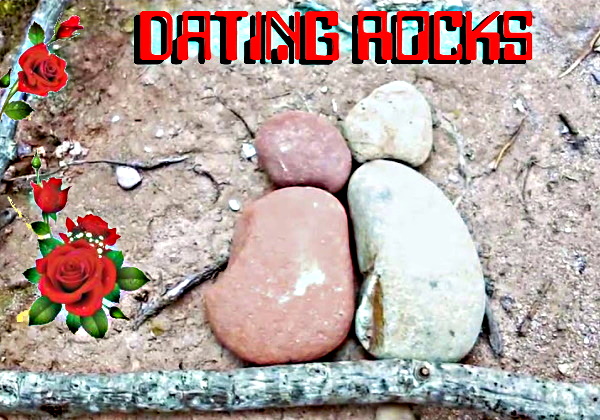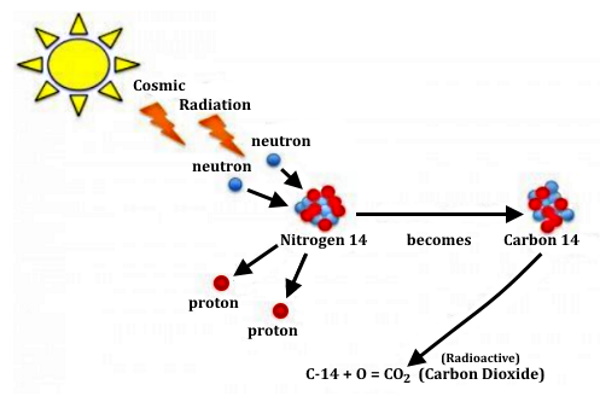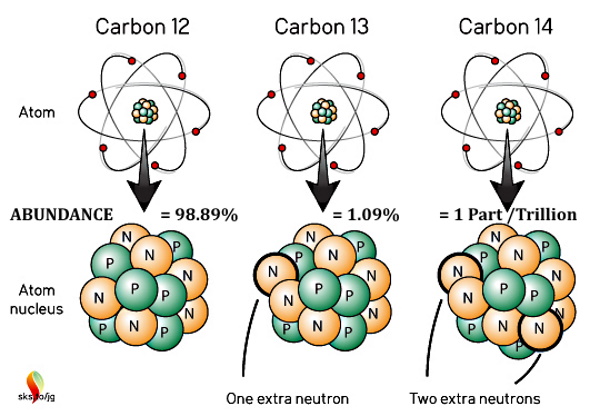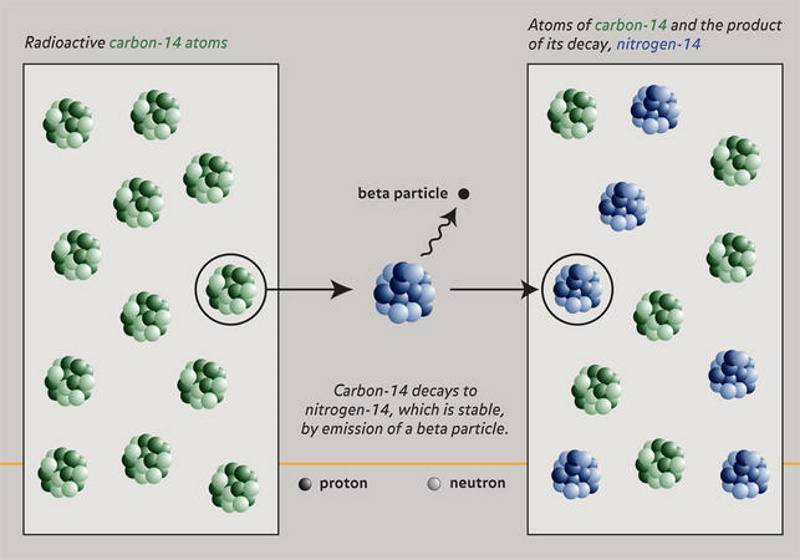Post by Admin on Oct 2, 2023 8:10:40 GMT -7

The Principles of Geology are OK for relative dating: The youngest are usually on top, changes in fossils over time, fractures and intrusions are younger than the rocks they appear in, but for absolute dating something more is required.
At first it was just counting tree rings and layers of clay in varves at the base of glaciers. Then came the discovery of isotopes and radioactivity.
First came Radiocarbon dating, or carbon-14 dating. It can accurately determine the age of organic materials up to 60,000 years before amounts become too small to measure. It was developed in the late 1940s at the University of Chicago by Willard Libby.


After becoming part of a plant or animal it begins to decay into it's daughter form.


Some commonly used element pairs to establish absolute ages
Original element Decay product Half-life (years); Dated materials
Carbon-14 Nitrogen-14 5,730; Previously living things
Uranium-235 Lead-207 704 million; Zircon
Potassium-40 Argon-40 1.25 billion; Zircon + Many rock-forming minerals (e.g., biotite, muscovite, amphibole, and Potassium feldspar) Whole crushed volcanic rocks (e.g., lava flows and ash)
Uranium-238 Lead-206 4.5 billion; Zircon
Rubidium-87 Strontium-87 48.8 billion; Many rock-forming minerals (e.g., biotite, muscovite, amphibole, and Potassium feldspar) Whole crushed metamorphic or igneous rock
Samarium-147 Neodymium-143 106 billion; Common in very small concentrations in any rock

Notice that ZIRCONS are often mentioned? Zircons have become all the rage for dating!


Zircon has the chemical formula of ZrSiO4. It precipitates from silicate melts with a high concentrations of rare earth elements, usually 1–3% of hafnium. The crystal structure is tetragonal. The natural color varies between colorless, yellow-golden, red, brown, blue, and green.

Zircon crystals are common in the crust of Earth in igneous rocks, in metamorphic rocks and as detrital grains in sedimentary rocks.
Large zircon crystals are rare. Their average size in granite rocks is about 0.1–0.3 mm (0.0039–0.0118 in), but they can also grow to sizes of several cm, especially in mafic pegmatites and carbonatites.



